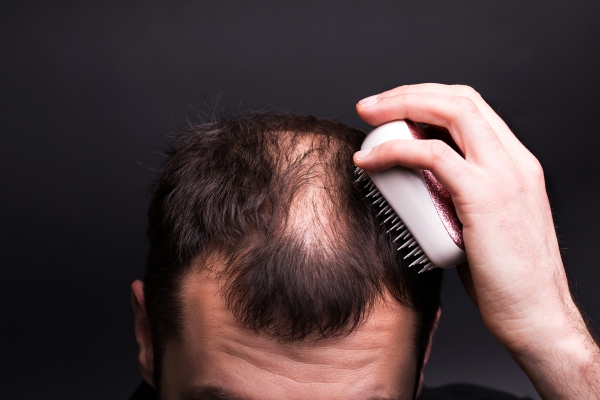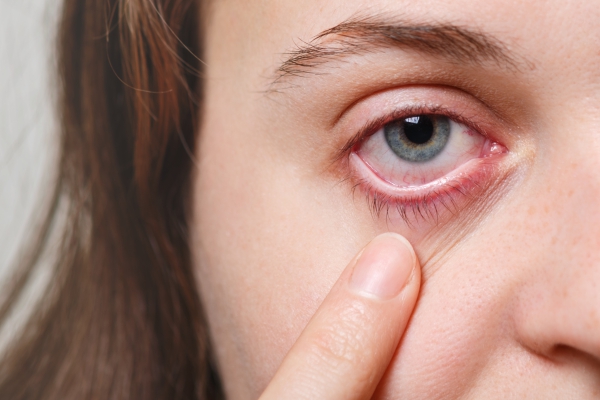What is Bell’s palsy?
Bell’s palsy is the most common cause of facial paralysis occurring on only one side of the face, also known as unilateral facial paralysis. It accounts for 60-75% of acute unilateral facial paralysis. It is also one of the most common neurologic problem involving the cranial nerves. The cranial nerves are a set of 12 paired nerves that originate directly from the brain. Among these nerves is the facial nerve which supplies areas of the face. Bell’s palsy occurs when the facial nerve is injured. In 80-90% of cases, the facial paralysis gradually resolves.
In the United States, around 23 per 100,000 people are affected by Bell’s palsy. It most commonly occurs on the right side of the face and can be recurrent, meaning that, if you had it and it resolved, you can still have it again. Very rarely, Bell’s palsy occurs on both sides of the face. If it does happen, it may be due to an underlying disease such as Guillain-Barré syndrome, sarcoidosis or meningitis. People who are diabetic are at increased risk of having the condition (29% more at risk). They are also more likely to have partial recovery from Bell’s palsy. Recurrence rate is also higher among the diabetic population.
Bell’s palsy tends to be more common among people with a weakened immune system or in pregnant women with hypertension (preeclampsia). It affects both men and women equally. However, it tends to be more common in women aged between 10 and 19 years compared to men in the same age group. The general peak age for Bell’s palsy is 20-40 years.

What are the causes of Bell’s palsy?
The exact mechanism through which Bell’s palsy arises is unknown. However, there are several factors that are known to trigger the condition. These include:
- Herpes simplex virus: Infection by herpes simplex virus is a common cause of Bell’s palsy. This is because it is an infection that affects nerves and can affect the facial nerve.
- Other infections: These infections include Lyme disease, syphilis, Epstein-Barr virus, cytomegalovirus, human immunodeficiency virus and herpes zoster infection. Some people have reported having Bell’s palsy following an upper respiratory tract infection.
- Autoimmune reactions: In some cases, your own body reacts against your facial nerve leading to Bell’s palsy.
You are also at increased risk of having Bell’s palsy if you have close family members who has/had the same condition or other nerve disorders.
What are the signs and symptoms of Bell’s palsy?
The following signs and symptoms are usually present in Bell’s palsy:
- Acute onset of paralysis on one side of the face affecting both the forehead and lower parts of the face
- Pain behind or in the ear
- Decreased watering of the eyes
- Changes in taste
- Increased sensitivity to sounds
- Weakness in face muscles
- Incomplete eye closure
- Tingling sensation in the cheeks or mouth
- Eye pain
- Blurred vision

The symptoms of Bell’s palsy tend to appear suddenly and peak at around 48 hours from onset. It may mimic stroke which may also involves unilateral paralysis of the face. However, the main difference is that there is most commonly weakness of the limbs in stroke.

How is the diagnosis of Bell’s palsy made?
To make the diagnosis of Bell’s palsy, your doctor will first ask you a series of questions to know more about your symptoms. He/she will then proceed with a thorough physical examination to look for signs of Bell’s palsy. He/she will also look for other signs in order to rule out other conditions such as stroke. Your doctor will use the findings from the history and physical examination to grade the severity of the disease according to the House and Brackmann grading system.
There are no specific tests to make the diagnosis of Bell’s palsy. However, depending on your presentation, your doctor may request some tests to identify any underlying cause or other disease that may be causing the facial paralysis.

How is Bell’s palsy managed?
In most cases, treatment for Bell’s palsy is not required as it usually resolves on its own. The goals of treatment for Bell’s palsy is to improve the functioning of the facial nerve and to reduce nerve damage. The choice of treatment depends on the severity and most probable prognosis in each particular case. Your doctor knows best which treatment would suit you the most. Treatment options include:
- Corticosteroids: These are anti-inflammatory medications that are very effective in improving and increasing the likelihood of recovery of the facial nerve. An example include prednisone.
- Antiviral medications: The exact role of antiviral drugs is still unknown. However, since Bell’s palsy may arise from viral infections, these drugs may play a role in the treatment. An example includes acyclovir. In some cases, corticosteroids may be used in conjunction with antiviral drugs.
- Topical eye treatments: In Bell’s palsy, the eyelids may not close properly. This makes your eyes more prone to drying, abrasions and ulcers. Topical eye lubricants (artificial tears or ointments) are useful in preventing eye complications. Patching the eyes can also be helpful to limit exposure to the exterior environment.
- Facial nerve decompression: Surgery can be done to decompress the facial nerve, however, it is controversial. This is usually done in people with an expected poor course of the disease.

What are the complications of Bell’s palsy?
In most cases, people with Bell’s palsy will recover fully without any complications. However, 30% of people have long-term symptoms and 5% have significant sequelae. The following complications may be present in some people:
- Excessive eye watering
- Obstructed nose
- Impaired or loss of taste
- Eye closure and pursed lips
- Mouth grimacing occurring when blinking the eyes
What is the prognosis for Bell’s palsy?
The outcome from Bell’s palsy varies from an early complete recovery to a marked nerve injury with permanent paralysis. The outcome may be classified into the 3 following groups:
- Group 1: Complete recovery of the movements of the face with no sequelae
- Group 2: Partial recovery of the movements of the face with no apparent cosmetic defects
- Group 3: Permanent neurologic and movement sequelae that are easily visible.
Around 80-90% of people recover without any disfigurement within 6 weeks to 3 months.
You are more likely to have a poor outcome if:
- You are aged greater than 60 years
- You had complete paralysis
- You had a decrease in taste and flow of saliva on the affected side of the face
- You have decreased watering of the eye on the same side of the paralysis

The earlier you seek medical help, the better the outcome and the less likely complications will arise.

Source:
Taylor, D., 2019. Bell Palsy
Baugh RF, Basura GJ, Ishii LE, Schwartz SR, Drumheller CM, Burkholder R, et al. Clinical Practice Guideline: Bell's Palsy Executive Summary. Otolaryngol Head Neck Surg. 2013 Nov. 149(5):656-63.
Vrabec JT, Backous DD, Djalilian HR, Gidley PW, Leonetti JP, Marzo SJ, et al. Facial Nerve Grading System 2.0. Otolaryngol Head Neck Surg. 2009 Apr. 140(4):445-50.
Anderson P. New AAN guideline on Bell’s palsy. Medscape Medical News. November 7, 2012.
Katusic SK, Beard CM, Wiederholt WC, Bergstralh EJ, Kurland LT. Incidence, clinical features, and prognosis in Bell's palsy, Rochester, Minnesota, 1968-1982. Ann Neurol. 1986 Nov. 20(5):622-7.
Hashisaki GT. Medical management of Bell's palsy. Compr Ther. 1997 Nov. 23(11):715-8.




